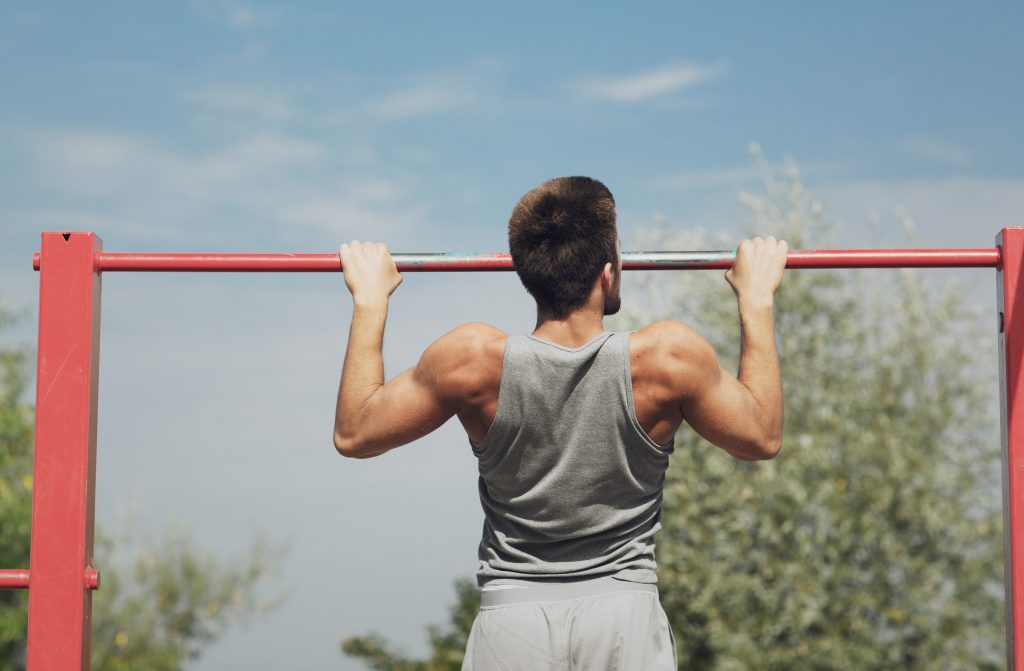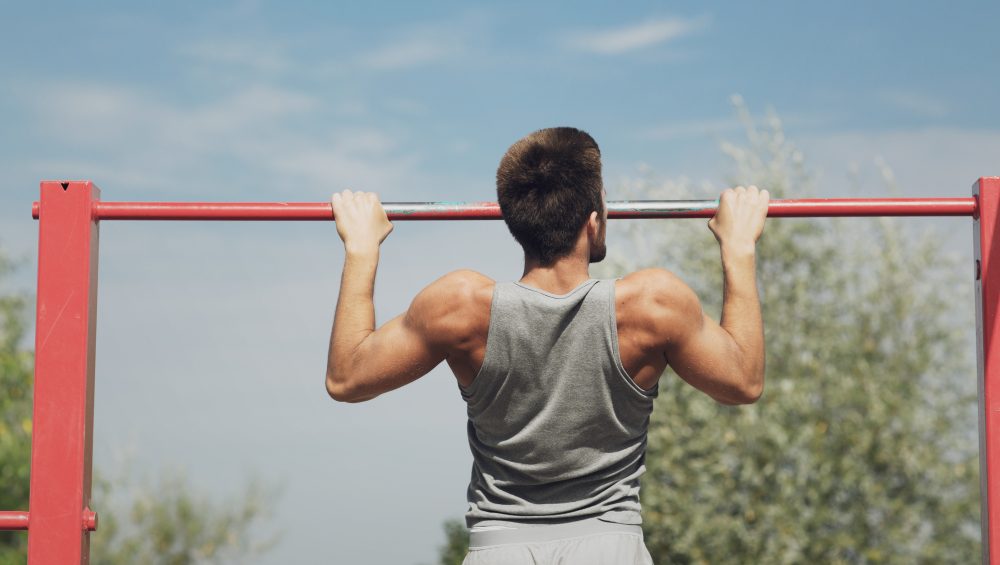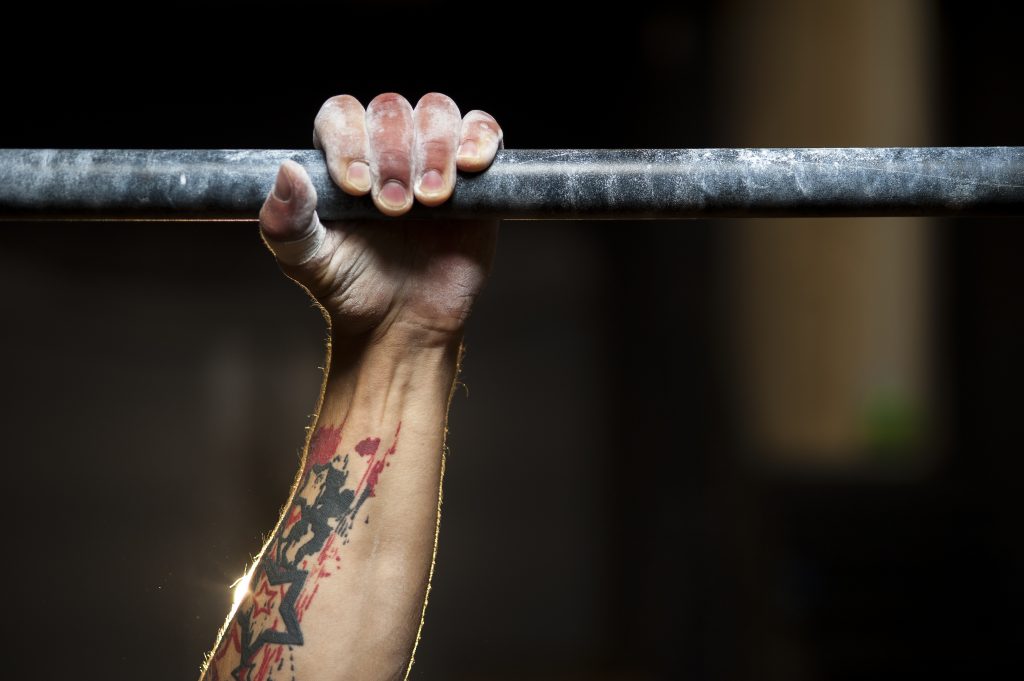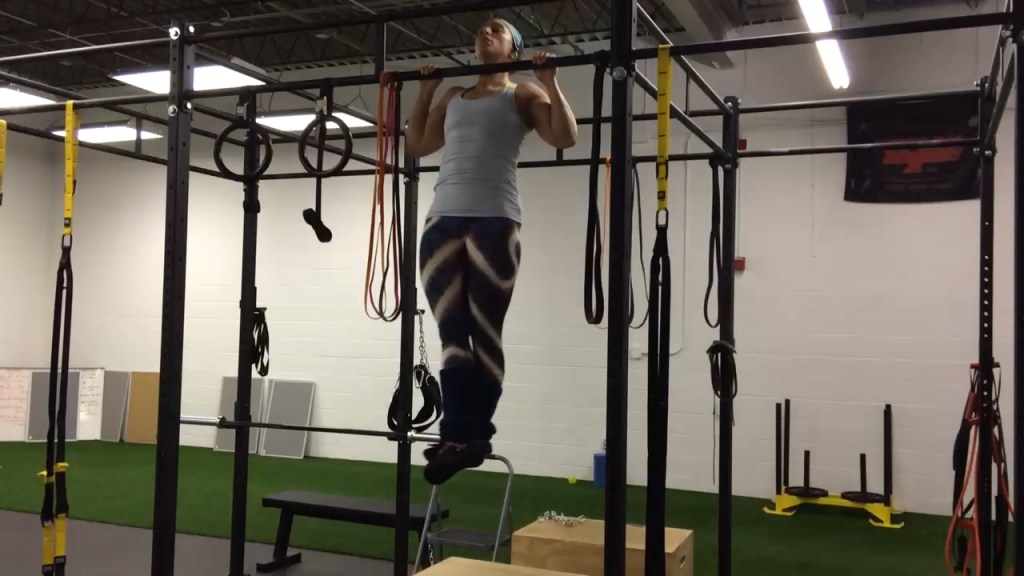If I want to learn more about astrophysics I listen to Neil deGrasse Tyson.
If I want to learn more about how to to be jacked while rocking a bowl cut I listen to He-Man.
Moreover, if I want to learn about or become a legit badass at pull-ups, my go to expert is Meghan Callaway. She’s a straight-up gangster when it comes to pull-ups and pull-up programming.
With the release of The Complete Trainers’ Toolbox this week, of which Meghan and myself are a part of (along with seven other health/fitness professionals), we felt it important to give people a bit of insight as to what kind of information they can learn from this resource.
Meghan goes into the weeds on anything and everything regarding programming for the pull-up and today she offers a little insight on some commonly made mistakes people make.
Enjoy
ALSO: The Complete Trainers’ Toolbox is on sale this week at $100 off the regular price.

Are You Committing These Mistakes?
Countless people of all genders have the goal of being able to perform one or many pull-ups. Yet it is no secret that most people struggle to execute a single strict pull-up, and this includes many elite athletes.
Sam Bennett, the number one draft pick in the 2014 NHL draft, made the news when he failed to perform a single pull-up at the NHL draft combine.
So the inability to excel at pull-ups definitely isn’t limited to the general population, or purely beginners. Most people fail to conquer pull-ups, not because they are physically incapable, but because they are making some key mistakes.
I have great news for you.
This can be rectified.
Case in point, shortly after Sam Bennett bombed his pull-ups in the NHL draft combine, with some proper training, he banged out 11 reps.
Note From TG: I actually wrote an article a few years ago on the reaction to people giving Sam Bennett grief about not being able to perform a pull-up initially. You can read it HERE.
In this article I am going to discuss FIVE key mistakes that are preventing an abundance of people from excelling at pull-ups.
Mistake #1: Relying on the Arms to Perform the Movement
When pull-ups are being executed correctly, the shoulder blades, not the arms, should be initiating the movement. Instead of using the muscles in the mid and upper back to perform the bulk of the movement, a myriad of people rely on their arms.
To be clear, while the muscles in the arms will play a role, they should only be assisting the muscles in the back, not performing the majority of the work.
During the initial phase of the movement, and as your body is traveling towards the bar, you want to draw each shoulder blade in towards your spine and down towards your opposite hip (depression, retraction, downward rotation), not pull with your arms.
During the eccentric phase of the movement, rather than keeping your shoulder blades pinned, a mistake that plagues many individuals and can again cause them to rely on their arms to execute the movement, your shoulder blades should perform the reverse movements and should move away from your spine and away from your opposite hip (elevation, protraction, upward rotation).
As you can see, the ability to control the movement of your shoulder blades is a key component of being able to perform pull-ups.
Solution
The scapula pull-up is a really useful pull-up specific regression as it teaches you how to initiate the movement with your shoulder blades instead of pulling with your arms. This exercise is also specific to pull-ups as it requires you use the same body positioning, and it helps improve grip strength.
A few key points:
- Initiate the movement by drawing your shoulder blades in towards your spine and down towards your opposite hip (retraction, depression, downward rotation).
- In the top position, pause for a brief count.
- Perform the eccentric component with complete control.
- During the lowering/eccentric portion of the movement, your shoulder blades should perform the reverse movements as they did during the concentric component, and should move away from your spine and away from your opposite hip (protraction, elevation, upward rotation).
- For the duration of the movement, your elbows should remain in a fixed position and should not bend at all. All of the movement should occur via the shoulder blades.
Mistake #2: Inability to Maintain the Proper Body Positioning
This might surprise you, but if you hope to perform pull-ups as efficiently as possible, your entire body must function as a synchronized unit.
Pull-ups are not just an upper body movement.
If you are not able to maintain the proper body positioning, and in order to do so your lumbo-pelvic region and lower body must remain in a relatively fixed position for the duration of the movement, you will struggle.
Your path to the bar will likely be longer and less efficient as you will be more prone to swinging, and you will likely be forced to move unnecessary deadweight to and from the bar. This is not conducive to optimal pull-up performance. Keeping your head, torso, and hips in a stacked position, something I often liken to a canister, is extremely important. Proper breathing, bracing, rib positioning, and glute engagement are crucial. In terms of your lower body, you want to fully extend your knees and contract your quadriceps, cross one foot over the other, and dorsiflex your feet.
Solution
The dead bug, and its many variations, is one of my go-to exercises for improving lumbo-pelvic stability.
This exercise, which can accommodate people of most fitness levels and abilities, trains your anterior core muscles to generate the requisite levels of tension needed to perform pull-ups efficiently. This versatile exercise also trains your muscles to resist the extension of the spine, and this is an area where many people labour. When heaps of people perform pull-ups, it is extremely common to see their ribcage flaring and lower back hyperextending. Dead bugs will help resolve these issues.
A few key points:
- For the duration of the exercise, keep your head, torso and hips in a stacked position. Keep your ribcage down, and do not allow your lower back to hyperextend. In other words, maintain the canister position.
- As you initiate each rep and lower the opposite arm and leg towards the floor, steadily exhale, and brace your anterior core muscles as hard as you can.
- Start out with your knees bent at a 90 degree angle and maintain this position for the duration of the movement. Only extend your knees (and perform more advanced variations) once you’ve mastered the movement with your knees bent, not before.
Here is an innovative and extremely effective dead bug variation you can try.
Mistake #3: Lack of Specificity
Are you spending endless hours training yet are still unable to execute one or more pull-ups?
The exercises you are performing might not be specific enough to pull-ups.
With your pull-up training, you need to perform exercises that develop pull-up specific mechanics and pull-up specific body positioning. Pull-up regressions develop these key components, and serve as great stepping stones towards being able to bang out one or many unassisted pull-ups. In terms of body positioning, exercises like hollow body holds, dead bugs, and hanging leg raises help you learn how to develop and also maintain proper pull-up specific body positioning.
Some common culprit exercises that many people believe will help their pull-up performance, yet have a relatively low carryover as they are not specific enough to pull-ups, include lat pull-downs, biceps curls, and machine assisted pull-ups.
These are just a few of many exercises I could list. The fact I named machine assisted pull-ups as one of these exercises might surprise you, so I will discuss this in my next point.
Mistake #4: Relying on Machine Assisted Pull-ups and Band Assisted Pull-ups
In most cases, I am not a fan of machine assisted pull-ups.
At least, I strongly believe there are many better options.
While machine assisted pull-ups do allow you to focus on scapular movement, so this is one benefit of the exercise, due to the fact you are kneeling on a pad, your body is in a completely different position to when you are performing regular pull-ups, and you don’t need to generate and maintain full body tension.
In essence, the need for pull-up specific body positioning and lumbo-pelvic stability are almost entirely removed from the overall equation. When it comes to training for actual pull-ups, there are plenty of other pull-up regressions and accessory exercises that are much more specific to actual pull-ups, and will have a vastly greater carryover to your pull-up performance.
Now when it comes to band assisted pull-ups, if they are implemented and execute correctly, and at an appropriate time in your training program, they can have a positive impact.
However, an abundance of people make the mistake of training for pull-ups by relying purely on band assistance, and they omit performing all of the other extremely important pull-up specific regressions.
With band-assisted pull-ups, the band provides the help in the bottom position of the movement, and this is when most people do not need the most assistance. Another key issue with band assisted pull-ups, the band makes it easy to disregard proper body positioning, and generating the requisite levels of tension around the spine, hips, and lower body.
Due to all of the above, when many people eliminate the band and attempt to perform regular pull-ups, they flounder.
Before you introduce band assisted pull-ups to your training program, you should have already developed the proper pull-up specific technique, the ability to control the movement of your shoulder blades and shoulders, and the ability to generate the requisite levels of tension and pull-up specific body positioning.
In short, when you are utilizing band assistance, it is imperative that your form is identical to when you are performing regular unassisted pull-ups. Also, you want to use as little assistance as needed, but as much as necessary so you can perform 100% of your reps with impeccable form.
Mistake #5: Insufficient Grip Strength
While this kind of goes without saying, if you cannot support your bodyweight from a hanging position, your ability to perform pull-ups will suffer. An insufficient grip plagues many people of all fitness levels and abilities, not just beginners.
Adding some grip specific exercises to your training program will positively impact your overall ability to perform pull-ups.
A few of my favorite exercises for improving grip strength include loaded carries, and bottoms-up kettlebell presses.
Loaded Carries
Key Points: (describing loaded carries with dumbbells by sides)
- For the duration of the exercise, maintain the canister position. Your head, torso and hips should remain in a stacked position. Do not allow your lower back to hyperextend or ribcage to flare.
- Keep your arms rigid (all the way down to your hands), and pretend you are trying to crush something in your armpits.
- For the duration of the exercise, maintain your 360 degree brace, and maintain regular breathing (360 degrees of air around your spine).
Bottoms-Up Kettlebell Presses
Key Points:
- For the duration of the exercise, maintain the canister position. Your head, torso and hips should remain in a stacked position. Do not allow your lower back to hyperextend or ribcage to flare.
- Keep the muscles in your forearm engaged, and wrist in a vertical position.
- Do not keep your shoulder blades pinned. They are supposed to move. This applies to both the concentric and eccentric components of the movement.
- Before you initiate each press, take a deep breath in, (360 degrees of air around your spine), brace your core (360 degree brace around your spine), tuck your ribs towards your hips, and squeeze your glutes. This will help stabilize your hips and spine.
Want to Learn More Pull-Up Badassery?
You can (and then some) by checking out The Complete Trainers’ Toolbox.

Nine fitness professionals tackle a bevy of topics ranging from assessment and program design to differentiating flexion & extension based back pain and battling negative self talk.
We all have encountered the same problems you have as a fitness professional; so here’s how we handled them.
- 17 total hours of content
- Earn CEUs
- Save $100 this week only.








